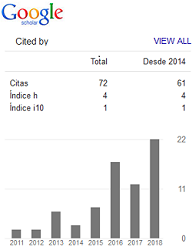Procedure for Integrated Risk Management at the University of Computer Sciences
Abstract
Aim: To design a procedure for integrated risk management at the University of Computer Sciences, in Havana, Cuba, in order to strengthen internal control.
Methods: analytical-synthetic, system approach, and descriptive statistics.
Main results: the novelty of this procedure is the manner of risk identification, analysis, and quantification that might take place in every process and event, and have a negative impact on objective fulfilment. Another important result is the protection of resources, and the observance of laws and regulations, in order to meet the strategic and work objectives. The determination of the control objectives and their plan of prevention was also innovating.
Conclusions: the outcome from the partial application of the procedure in the Managing Office for Internal Control at the university concluded with the identification of 15 risks and 48 related causes. Four of the risks were moderate, seven were low, and two were trivial. Six of them were considered relevant, and underwent integrated analysis that led to five control objectives and twelve actions.
Downloads
Abstract
Aim: To design a procedure for integrated risk management at the University of Computer Sciences, in Havana, Cuba, in order to strengthen internal control.
Methods: analytical-synthetic, system approach, and descriptive statistics.
Main results: the novelty of this procedure is the manner of risk identification, analysis, and quantification that might take place in every process and event, and have a negative impact on objective fulfilment. Another important result is the protection of resources, and the observance of laws and regulations, in order to meet the strategic and work objectives. The determination of the control objectives and their plan of prevention was also innovating.
Conclusions: the outcome from the partial application of the procedure in the Managing Office for Internal Control at the university concluded with the identification of 15 risks and 48 related causes. Four of the risks were moderate, seven were low, and two were trivial. Six of them were considered relevant, and underwent integrated analysis that led to five control objectives and twelve actions.














